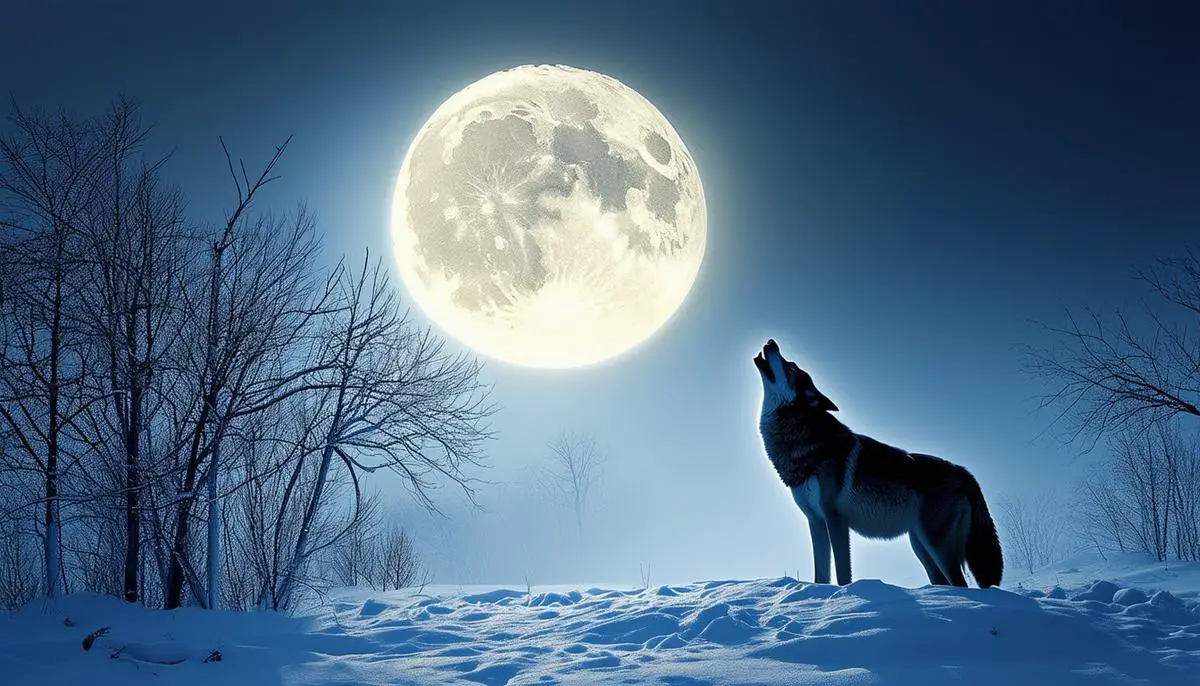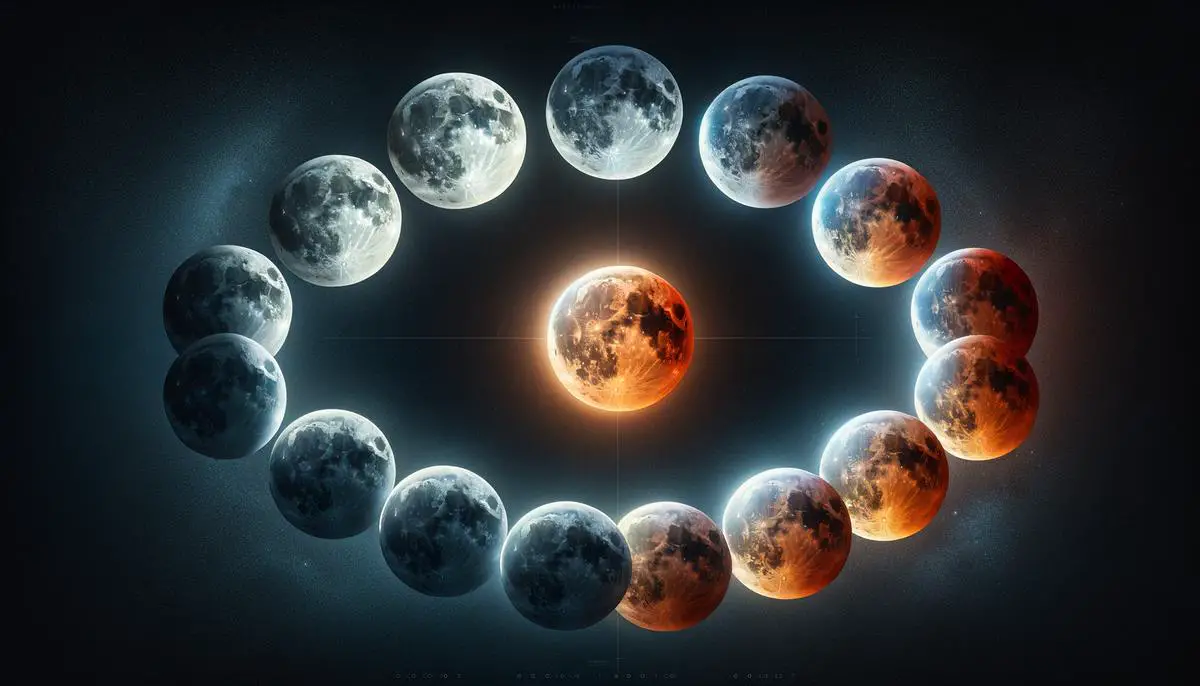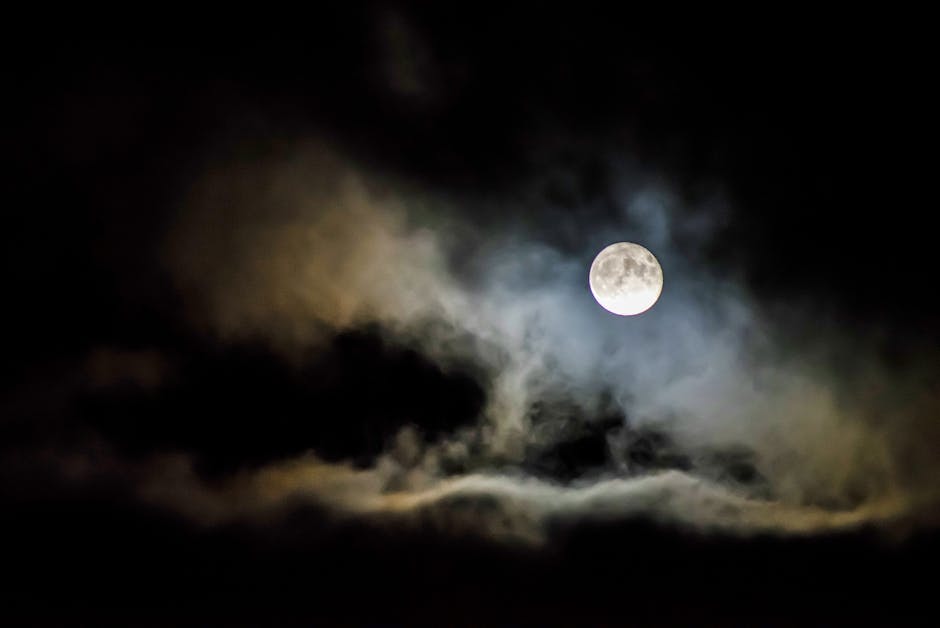Full Moon Phases and Their Names
| Date | Name | U.S. Eastern Time | GMT |
|---|---|---|---|
| January 25 | Wolf Moon | 12:54 p.m. | 17:54 |
| February 24 | Snow Moon | 7:30 a.m. | 12:30 |
| March 25 | Worm Moon | 3:00 a.m. | 07:00 |
| April 23 | Pink Moon | 7:49 p.m. | 23:49 |
| May 23 | Flower Moon | 9:53 a.m. | 13:53 |
| June 21 | Strawberry Moon | 9:08 p.m. | 01:08 on June 22 |
| July 21 | Buck Moon | 6:17 a.m. | 10:17 |
| August 19 | Sturgeon Moon | 2:26 p.m. | 18:26 |
| September 17 | Harvest Moon | 10:34 p.m. | 02:34 on Sept. 18 |
| October 17 | Hunter's Moon | 7:26 a.m. | 11:26 |
| November 15 | Beaver Moon | 4:29 p.m. | 21:29 |
| December 15 | Cold Moon | 4:02 a.m. | 09:02 |
Traditional Full Moon Names in 2024
The names for each Full Moon draw from various cultural, agricultural, and natural sources. These names help track the passing seasons and link human observations to the lunar cycle.
January 25 — Wolf Moon
The Wolf Moon is named after the howls of hungry wolves. During January, food scarcity drives wolves to be more vocal, reflecting this period of activity.
February 24 — Snow Moon
Snow Moon aptly describes February, a month known for heavy snowfall in many regions. It's a straightforward observation of the winter season.
March 25 — Worm Moon
Named for the earthworms that reappear as the ground begins to thaw. This signals the start of spring and the renewal of soil life.
April 23 — Pink Moon
This name doesn't refer to the moon's color but to the blooming of pink wildflowers known as Phlox. The Pink Moon marks the revival of floral life after winter.
May 23 — Flower Moon
As spring fully blooms, May's Flower Moon celebrates the abundance of budding flowers in many regions. Its name is a testament to the seasonal beauty.
June 21 — Strawberry Moon
This Full Moon marks the peak of strawberry harvesting season. It's a reminder of the bounty and sweetness of early summer.
July 21 — Buck Moon
The Bucks (male deer) begin to grow new antlers at this time of year, hence the name. It points to the cycle of growth in the animal kingdom.
August 19 — Sturgeon Moon
Named after the abundance of sturgeon fish in North America's Great Lakes and other major bodies of water. This Full Moon highlights a critical fishing season.
September 17 — Harvest Moon
The Harvest Moon is nearest to the autumnal equinox, providing extra moonlight that helps farmers work longer to bring in their crops. It's about utility and sustenance.
October 17 — Hunter's Moon
Following the harvest, October's Hunter's Moon provides optimal light and conditions for hunting. Its name reflects a time of preparation for winter.
November 15 — Beaver Moon
November is when beavers start building their winter dams, hence the name. It calls attention to animal preparation and survival strategies.
December 15 — Cold Moon
The Cold Moon marks the stark chill of December and the onset of deep winter. Its name is a straightforward signal of the season's severity.
More Specialized Full Moon Names
Beyond the standard names, various cultures have their own unique titles:
| Month | Name |
|---|---|
| January | Holiday Moon |
| February | Budding Moon |
| March | Sleepy Moon |
| April | Peony Moon |
| May | Dragon Moon |
| June | Lotus Moon |
| July | Hungry Ghost Moon |
| August | Harvest Moon |
| September | Chrysanthemum Moon |
| October | Kindly Moon |
| November | White Moon |
| December | Bitter Moon |
These names often align with cultural events, agricultural cycles, or seasonal changes unique to the region, reflecting the diverse ways humanity has connected with the moon over millennia.

Phases of the Moon Explained
As the moon revolves around Earth, it exhibits a captivating sequence of phases due to the varying angles of sunlight hitting its surface. These phases follow a predictable cycle known as a synodic month, lasting approximately 29.5 days.
New Moon
The cycle begins with the New Moon. At this stage, the moon is positioned between the Earth and the Sun, rendering its sunlit side invisible from our vantage point on Earth. The New Moon marks the time when we see very little or no part of the moon's face illuminated.
Waxing Crescent
As the moon progresses in its orbit, it enters the waxing crescent phase. During this phase, a sliver of the moon becomes visible, growing gradually larger each night. This phase is characterized by a thin crescent shape lighting up in the western sky after sunset.
First Quarter
About a week after the New Moon, we reach the First Quarter phase. Here, the moon is 90 degrees away from the sun in the sky, and we see half of its face illuminated. The term "first quarter" signifies that the moon is one-quarter of the way through its orbit around Earth.
Waxing Gibbous
Following the First Quarter is the Waxing Gibbous phase. More than half of the moon's face is lit up, but it has not yet reached full illumination. Each night, the visible part of the moon increases in size, appearing more rounded and bright in the evening sky.
Full Moon
The Full Moon occurs when the moon is directly opposite the sun, with Earth sandwiched in between. The moon's face is fully illuminated, creating the iconic bright, round appearance. This phase captures the maximum sunlight on the side facing Earth, making the entire disk shine.
Waning Gibbous
Post Full Moon, the moon enters the Waning Gibbous phase. Similar to Waxing Gibbous but in reverse, during this phase, the illuminated portion gradually decreases each night. The moon still appears large and bright, but the lighted area diminishes as it moves toward the next phase.
Last Quarter
Approximately three weeks into the cycle, the Last Quarter phase occurs. The moon has traveled another quarter of the way around Earth, now 270 degrees from the New Moon position. We again see half of the moon's face illuminated, but this time it's the opposite half from what was visible during the First Quarter.
Waning Crescent
Finally, the moon transitions into the Waning Crescent phase. Only a thin crescent remains illuminated as it edges closer to completing its orbit. Each night, the visible sliver shrinks, signaling the end of the current synodic month.
The moon's phases reflect the changing angles between the Earth, moon, and sun. As the moon orbits our planet, different portions of its sunlit side become visible. This continual change creates a dynamic celestial show, a rhythmic dance that repeats approximately every 29.5 days.
Impact of Full Moons
The intricate gravitational dance between the Earth, moon, and sun does more than just paint a pretty picture in the sky. Full Moons have a significant influence on natural phenomena, such as tides, due to the gravitational forces they exert. When the moon is full, it aligns with the sun on opposite sides of Earth. This alignment amplifies their combined gravitational pull, resulting in what is known as spring tides.
Spring tides are characterized by exceptionally high and low tides. The gravitational forces of the sun and moon work in tandem to tug on Earth's water, causing the oceans to bulge outwards in the direction of both celestial bodies. Coastal areas experience higher than usual high tides and lower than usual low tides during the Full Moon and New Moon phases.1 This tidal phenomenon plays a crucial role in marine and coastal ecosystems, affecting everything from the feeding patterns of marine creatures to the erosion and formation of coastlines.
Beyond the tangible impact on ocean tides, Full Moons have long held a place in folklore and cultural beliefs. Various societies have attributed mystical and behavioral changes to the glow of a Full Moon. For instance, the term "lunatic" derives from the Latin word "lunaticus," meaning "of the moon," suggesting that the Full Moon was once believed to incite madness.2 Many cultures have tied Full Moons to increased fertility, transformation, and even werewolf legends.
Scientific inquiries into the Full Moon's influence on human behavior, however, have yielded mixed results. Studies investigating a correlation between Full Moons and phenomena such as increased birth rates, hospital admissions, and criminal activity have often found no substantial evidence to support these claims. A comprehensive study reviewed hospital admission records over several years and found no significant uptick in admissions during Full Moon nights.3 Similarly, criminal activity patterns do not appear to show any consistent increase during Full Moon phases.
Despite the lack of scientific backing, the mystique of the Full Moon persists in popular culture and personal anecdotes. Many people report feeling more restless or experiencing vivid dreams during Full Moons, though these experiences can often be attributed to the power of suggestion and confirmation bias rather than any celestial influence.
In 2024, stargazers and enthusiasts have the regular monthly Full Moons to look forward to and notable celestial events involving lunar eclipses. For instance, on March 25, a penumbral lunar eclipse will be visible. Though subtle, this type of eclipse sees the moon pass through the outer shadow of Earth, creating a slight shading on its surface. Later in the year, on September 17-18, a more dramatic partial lunar eclipse will occur, where a portion of the moon will pass through Earth's central shadow, or umbra, making a more noticeable darkening of the moon's surface.
These eclipses add an extra layer of excitement to the Full Moon phases, offering a unique opportunity for observers to witness the dynamic interactions within our solar system. Whether you're an avid astronomer or a casual observer, the Full Moons and their associated events in 2024 offer a chance to appreciate the cosmic choreography that governs our sky.

- National Oceanic and Atmospheric Administration. Tides and the Moon.
- Raison CL, Klein HM, Steckler M. The moon and madness reconsidered. J Affect Disord. 1999;53(1):99-106.
- Margot JL. No evidence of purported lunar effect on hospital admission rates or birth rates. Nurs Res. 2015;64(3):168-175.
![]()
